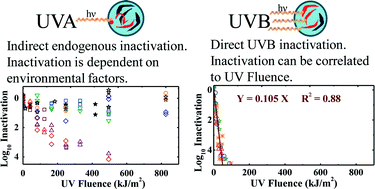Inactivation mechanisms of cryptosporidium parvum oocysts by solar ultraviolet irradiation
Abstract
Cryptosporidium parvum oocysts have been known to cause adverse health effects worldwide, and processes that contribute to their inactivation have gained wide attention in recent years. Solar inactivation is an important process that can improve surface water quality. Solar disinfection (SODIS) can be used to disinfect water as a point-of-use alternative, and disinfect wastewater in waste stabilization ponds. However, a clear understanding of the oocyst solar inactivation mechanisms is lacking. This study systematically investigated the oocyst solar inactivation mechanisms in the presence of a wide range of environmental factors and also provided an insight on the metabolic response of oocysts using the microarray analysis. The result revealed that oocyst inactivation by solar UVA/visible light was dominated by UVA-induced internal radical damages and was sensitive to both the temperature and the oocyst source. External radical producing sensitizers did not enhance the UVA/visible light inactivation of oocysts due to the protection by the oocyst wall. In contrast, UVB was found to directly damage the oocyst genome, ensuring an effective inactivation that correlated only with UV fluence after being corrected for light screening regardless of the oocyst source, temperature, and the presence of external sensitizers. Further microarray analysis suggested that the effective UVB inactivation could be explained by the down-regulation of most of the genes responsible for cellular metabolic activities and the lack of expression of stress protection mechanisms in oocysts after 30 minutes of UVB exposure. These results facilitate the understanding and design of water and wastewater treatment processes that involve natural sunlight exposure.


 Please wait while we load your content...
Please wait while we load your content...